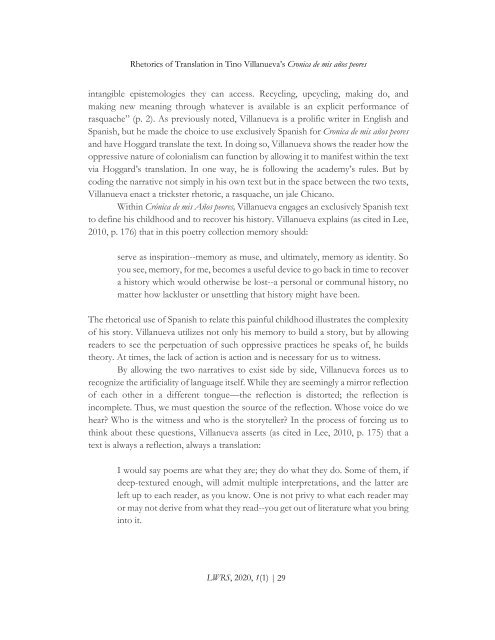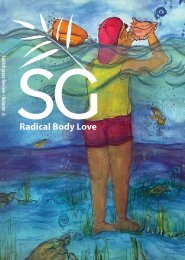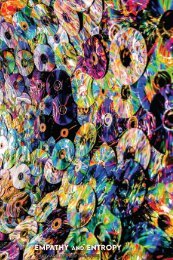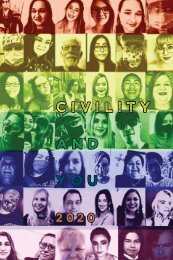LWRS June 2020 Volume 1, Issue 1
Inaugural Issue co-edited by Yndalecio Isaac Hinojosa and Isabel Baca
Inaugural Issue co-edited by Yndalecio Isaac Hinojosa and Isabel Baca
Create successful ePaper yourself
Turn your PDF publications into a flip-book with our unique Google optimized e-Paper software.
Rhetorics of Translation in Tino Villanueva’s Cronica de mis años peores<br />
intangible epistemologies they can access. Recycling, upcycling, making do, and<br />
making new meaning through whatever is available is an explicit performance of<br />
rasquache” (p. 2). As previously noted, Villanueva is a prolific writer in English and<br />
Spanish, but he made the choice to use exclusively Spanish for Cronica de mis años peores<br />
and have Hoggard translate the text. In doing so, Villanueva shows the reader how the<br />
oppressive nature of colonialism can function by allowing it to manifest within the text<br />
via Hoggard’s translation. In one way, he is following the academy’s rules. But by<br />
coding the narrative not simply in his own text but in the space between the two texts,<br />
Villanueva enact a trickster rhetoric, a rasquache, un jale Chicano.<br />
Within Crónica de mis Años peores, Villanueva engages an exclusively Spanish text<br />
to define his childhood and to recover his history. Villanueva explains (as cited in Lee,<br />
2010, p. 176) that in this poetry collection memory should:<br />
serve as inspiration--memory as muse, and ultimately, memory as identity. So<br />
you see, memory, for me, becomes a useful device to go back in time to recover<br />
a history which would otherwise be lost--a personal or communal history, no<br />
matter how lackluster or unsettling that history might have been.<br />
The rhetorical use of Spanish to relate this painful childhood illustrates the complexity<br />
of his story. Villanueva utilizes not only his memory to build a story, but by allowing<br />
readers to see the perpetuation of such oppressive practices he speaks of, he builds<br />
theory. At times, the lack of action is action and is necessary for us to witness.<br />
By allowing the two narratives to exist side by side, Villanueva forces us to<br />
recognize the artificiality of language itself. While they are seemingly a mirror reflection<br />
of each other in a different tongue—the reflection is distorted; the reflection is<br />
incomplete. Thus, we must question the source of the reflection. Whose voice do we<br />
hear? Who is the witness and who is the storyteller? In the process of forcing us to<br />
think about these questions, Villanueva asserts (as cited in Lee, 2010, p. 175) that a<br />
text is always a reflection, always a translation:<br />
I would say poems are what they are; they do what they do. Some of them, if<br />
deep-textured enough, will admit multiple interpretations, and the latter are<br />
left up to each reader, as you know. One is not privy to what each reader may<br />
or may not derive from what they read--you get out of literature what you bring<br />
into it.<br />
<strong>LWRS</strong>, <strong>2020</strong>, 1(1) | 29





